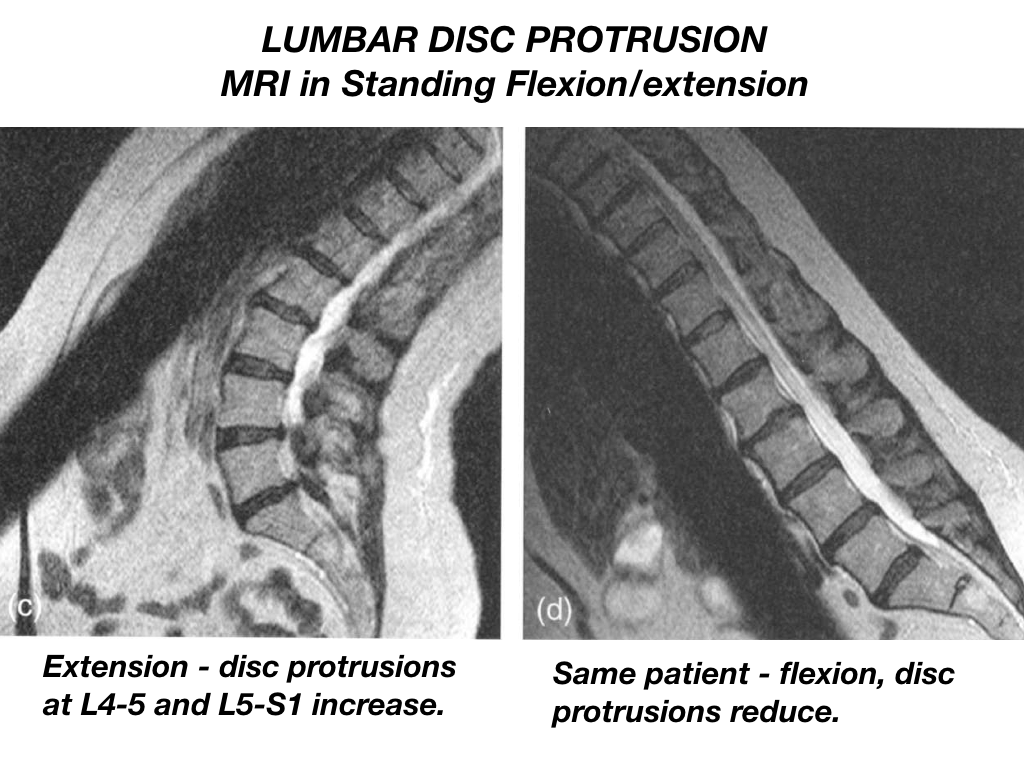Check out this out - bulging of the lumbar intervertebral disc in flexion.
You can see that the anterior annulus bulges and it turns out that it's the opposite on the posterior surface, even when there is a disc bulge - surprising considering we have always though that flexion would increase a disc bulge.
|
We took this video during a cadaver experiment on the lumbar nerve roots. As an aside, we simulated flexion to illustrate the characteristic bulging at the front of the lumbar disc. The back of the disc bulges less because it is pulled taught and follows a more direct course between the upper and lower vertebral bodies.
Acknowledgement: Prof Tom Van Hoof, Ghent University, Ghent, Belgium. |
From:
Jinkins J, Dworkin J 2002b Upright,Weight-Bearing, Dynamic-KineticMRI of the Spine - pMRI/kMRI. In: Kaech D, Jinkins J (Eds), Spinal Stabilization Procedures: Diagnostic and Therapeutic Aspects of Intervertebral Fusion Cages, Artificial Discs and Mobile Implants, 73-82. Elsevier, Amsterdam. |

